
Your Cart
Mata Ni Pachedi - An Ode To Goddess Durga
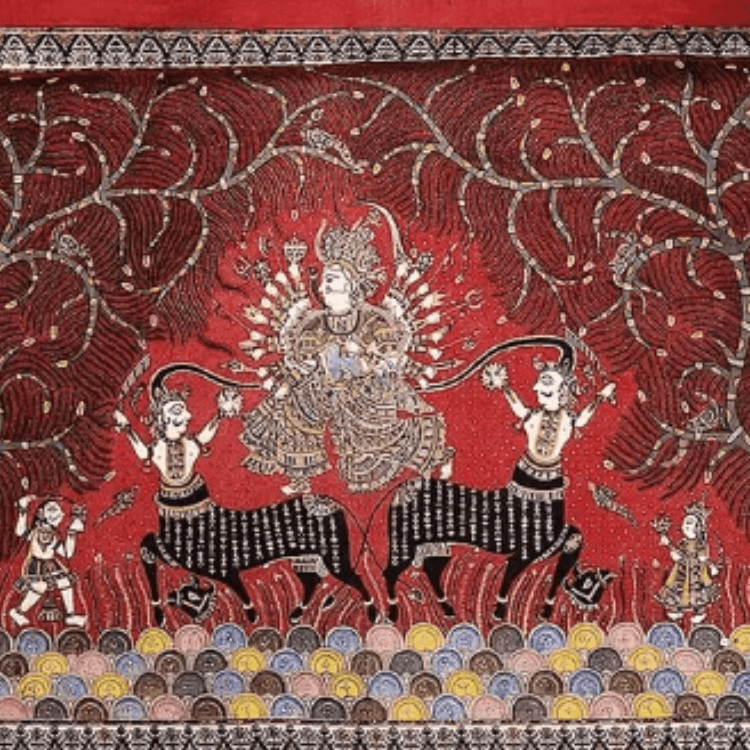
The festive season is all set, to begin with, Shardiya Navratri, the festival of worshipping the nine avatars of Maa Durga. Durga Puja and Dussehra are celebrated on these nine days. The legend of Navratri is about the great battle between the powerful demon Mahishasura and Goddess Durga.
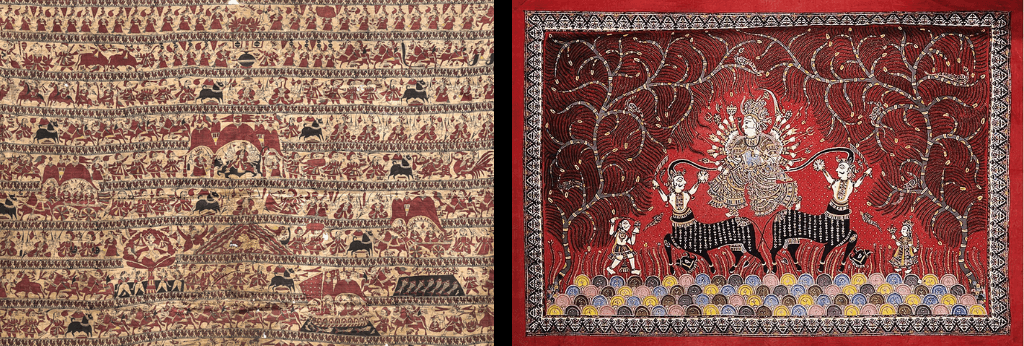
Each year, an incarnation of “Goddess Durga” is worshipped to celebrate the day of her victory over Mahishasura, and of 'Good over Evil’ on each day of Navratri. Durga, the Hindu goddess, is not only worshipped as a principal aspect of the mother goddess Mahadevi but she also symbolises protection, strength, motherhood, destruction, and wars.
Origin ------
In Gujarat, "pujaks" worship the Mother Goddess - including members of the Vaghri community. Due to caste restrictions earlier, they were not allowed to enter temples, so they painted images of the goddess on fabric hangings – which were displayed during ceremonies and later put away when not in use.
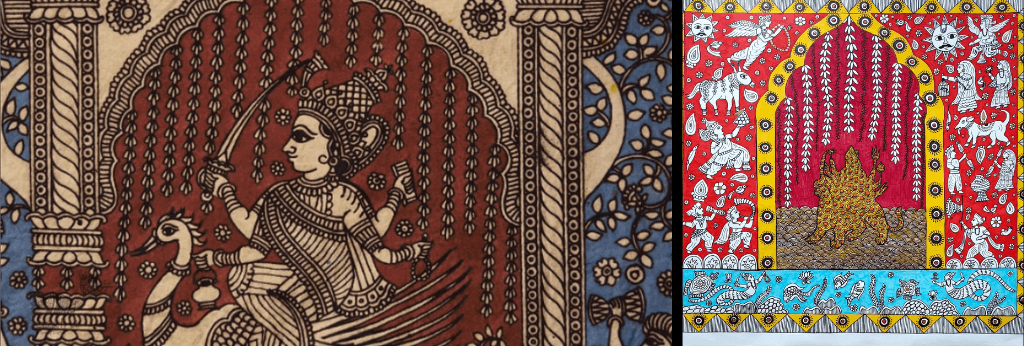
Indeed this handmade unique craft representing images of the Mother Goddess on cloth – is called Mata Ni Pachedi. The images usually feature the Goddess as the dominant figure in the centre. She is holding a weapon to fight evil, with animals and plants intricately drawn around her. Nonetheless, there are only five families left who can carry forward this tradition that goes back over 300 years. With deep-rooted knowledge passed down over generations makes it an endangered form of art. Pachedi is a religious textile folk art taken from the Kalamkari style of painting, one of the best among Indian art, featuring the Mother Goddess at the centre and her stories with the images of devotees along with flora and fauna on the remaining cloth.
Making Of Mata Ni Pachedi Art Form ----------------------------------
As a matter of fact, creating a Mata ni Pachedi is a complex task involving painting mythology stories and usually depicting the manifestation of goddesses. Cotton cloth is the canvas of this art. The cloth is first soaked in water for 24 hours and then sun-dried. The cloth is again soaked in the solution of harda and again left under the sun for drying. It takes two complete days to make the canvas ready. Later the canvas is ready, an outline of the creation is drawn on it in black colour, which is a natural, homemade colour, like all other colours used in the art. The artists keep a mixture of jaggery, iron rust, and water in a completely covered pot for almost 15 days to obtain the natural black colour with tamarind seed paste to make different colours.
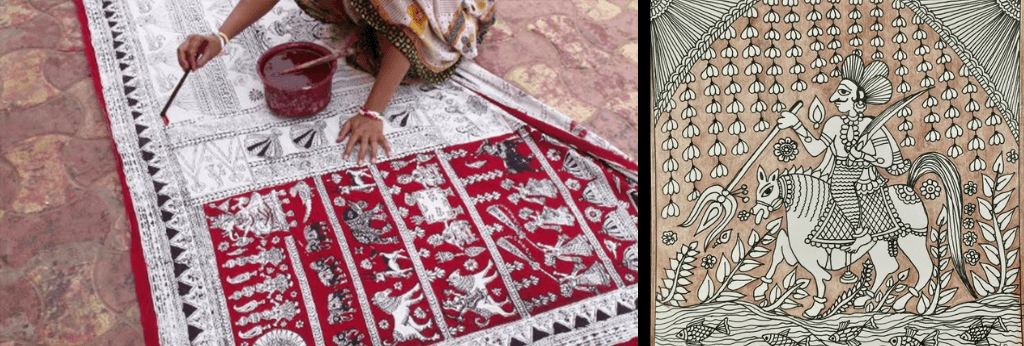
Mata ni Pachedi is painted using Kalamkari techniques. Bamboo sticks are used as pencils and paint brushes. This art involves freehand drawing. Further, the canvas is painted with a dye colour made from a solution to make it visible during the application. The major reason to use natural dyes as the paint is to keep this art everlasting.
Colours Of Mata Ni Pachedi ---------------------------
Each colour has its own significance in Mata ni Pachedi. In order to get the finishing touch after completing the colours, the painted fabric is washed off in running water. Another technique used to create the art involves wooden block printing.
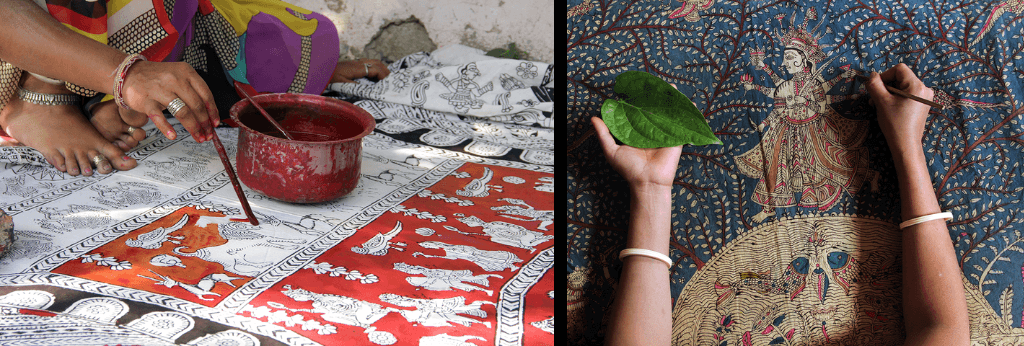
The Uniqueness Of Mata Ni Pachedi Art Form ------------------------------------------
The uniqueness of this art is that it takes days of patience and dedication, to make one piece of art. Many places use Mata Ni Pachedi textile art. The reason being its sacred nature it is often referred to as sacred cloth.
Though making the art takes several months and selling it off is an even more difficult task. The artists were registered in the artisan list. They usually, receive letters from the art department for art exhibitions and sales and travel a lot. But now the digital world has completely changed the whole process and given a new way to sell products all over the country.
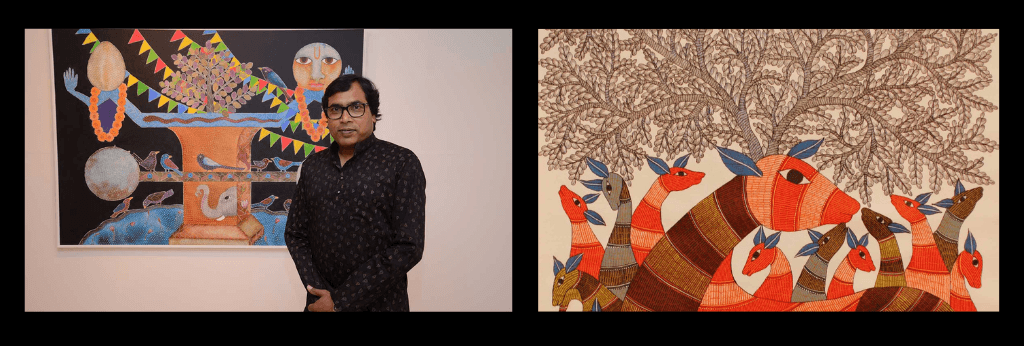
For many more interesting and surprising facts about art around us, join us on Instagram: @rooftop_app or download our app available for both iOS and Android devices.